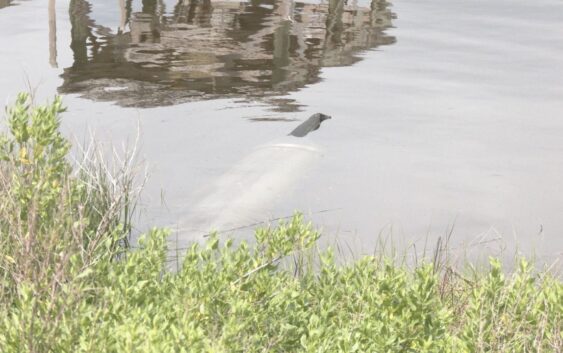- Eric Tulsky comfortable, confident and going for the Stanley Cup in 2nd year as Hurricanes GM
- 5 homes collapse into the surf of the Outer Banks as hurricanes rumble in Atlantic
- As hurricanes pass offshore, more Buxton homes collapse into the sea
- Central Texas floods reveal need to shore up disaster response in unincorporated areas
- Latest: Tropical Storm Imelda will pull away from East Coast, expected to become a hurricane
No Storm, Still Flooded: Carolina Beach flooding research project

CAROLINA BEACH, NC (WWAY) — A research project led by North Carolina State University and UNC-Chapel Hill is helping the Town of Carolina Beach better understand why some areas flood — even when there’s no rain in the forecast.
The “Sunny Day Flooding Project” focuses on flooding events that happen outside of major storms.
“Not like potential tropical cyclone 8 last September. What we are focused on are the everyday events,” said Katherine Anarde, an assistant professor of coastal engineering at NC State and one of the researchers behind the project.
Anarde said the team has been studying non-storm flooding events that are becoming increasingly common.
“While the big events are important, what’s happening more frequently are these smaller, shorter events during high tides, everyday rainstorms or just a little bit of wind,” she said.
The team has installed flood monitoring equipment in low-lying areas — including Canal Drive — where flooding is most frequent. The devices allow researchers and the town to keep an eye on real-time conditions.
“We have sensors installed in storm drains all along Canal Drive, and those sensors let us know if the storm drains are acting properly,” Anarde said.
These sensors can detect when water from the bay flows backward through the storm drains and onto the street — even without rainfall.
“They give residents an opportunity to prepare in advance of floods, and we also have cameras that give a real-time snapshot of flooded roadways,” she said.
The Town of Carolina Beach helps maintain the equipment.
Stormwater Manager Daniel Keating said the cause of flooding isn’t always visible on the surface.
“So the flooding will come from the outfall pipe and go backwards into the storm grate and up through the storm grate and into the street. You have to wait for the time period of the high tide to go back down to normal to get the street dry again,” Keating said.
Keating said the town also surveyed residents to identify additional areas that flood during high tides or wind-driven events.
“They could chime in that the south end might flood or the north end — not just Canal — so it gave an overall picture of how severe weather can affect the island,” he said.
Researchers plan to present their findings and proposed solutions to the Carolina Beach Town Council in July.